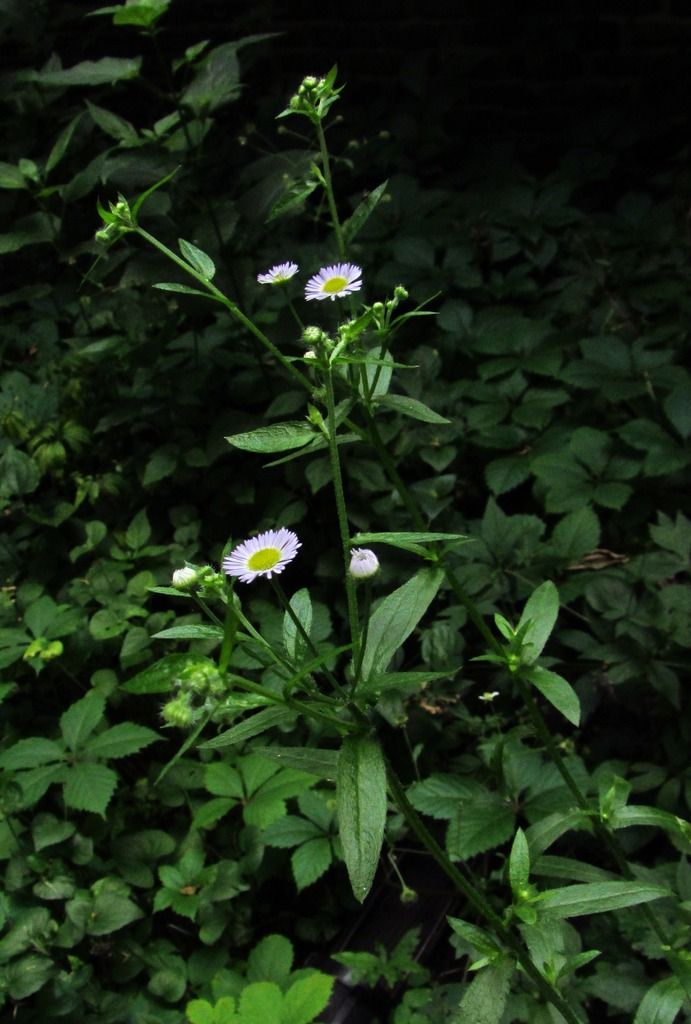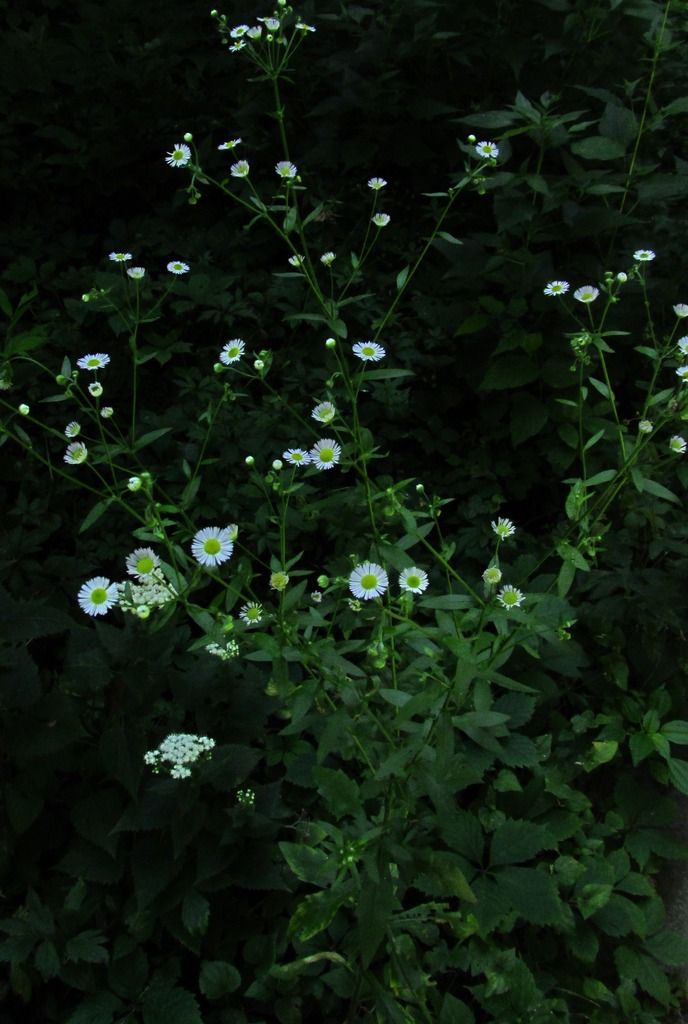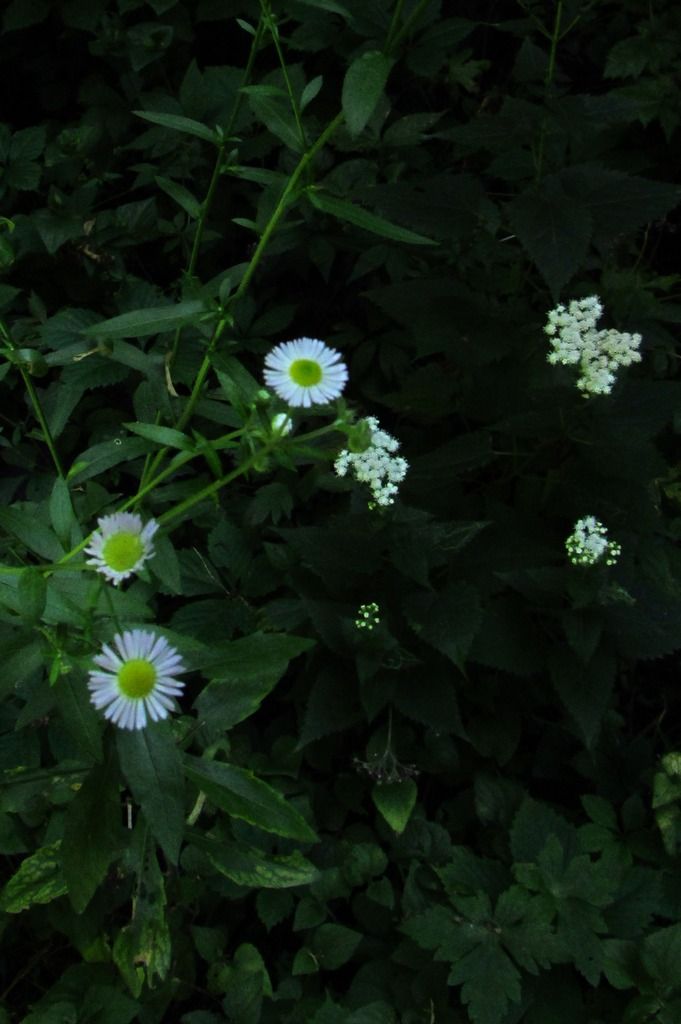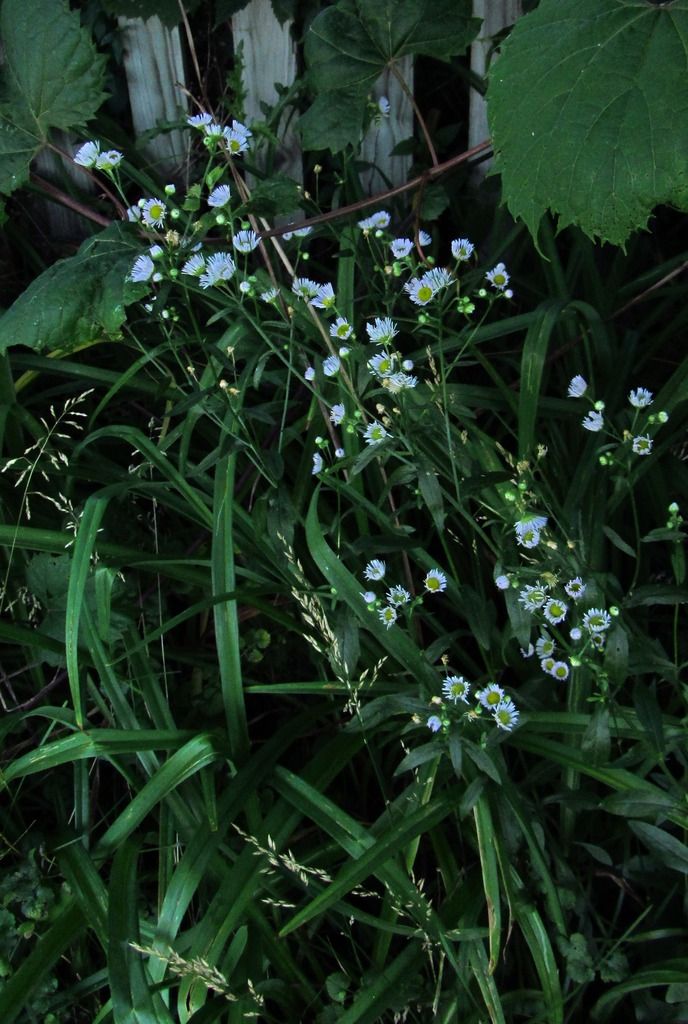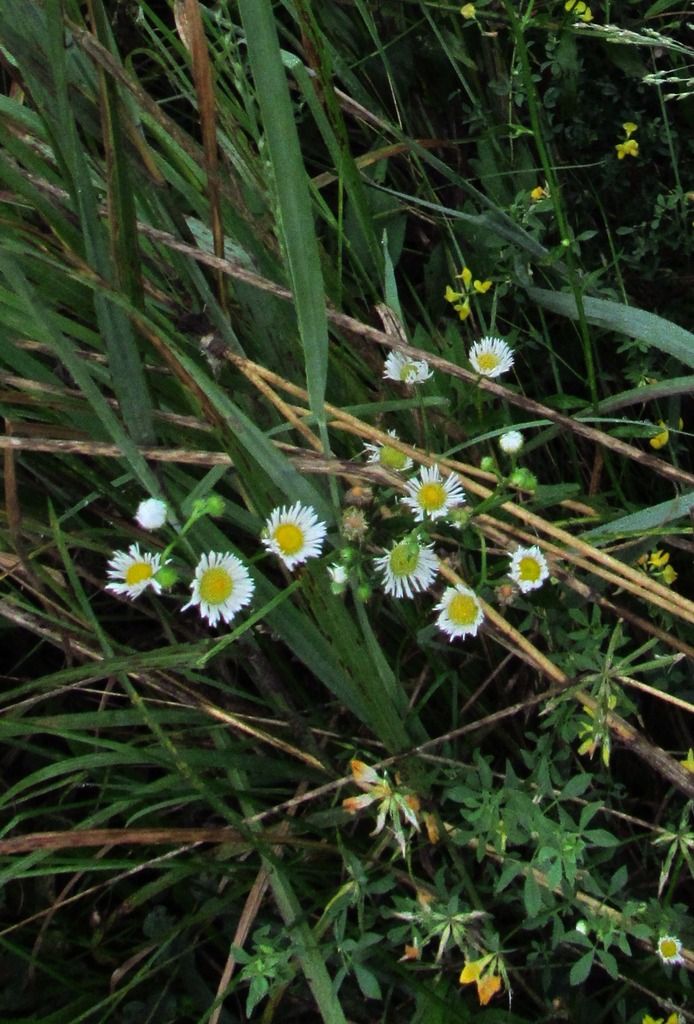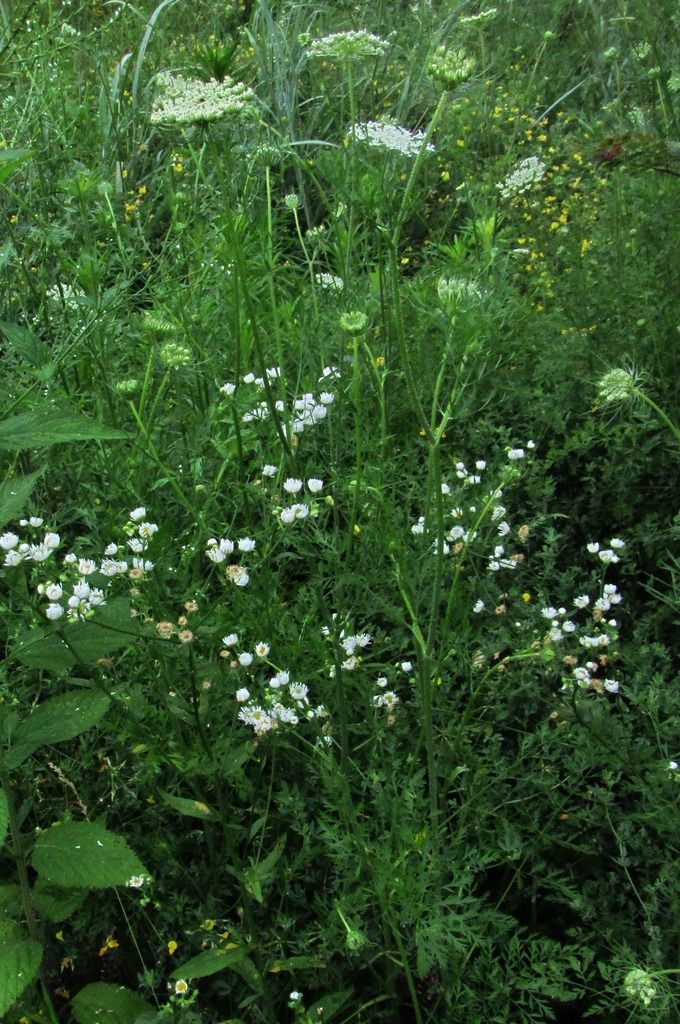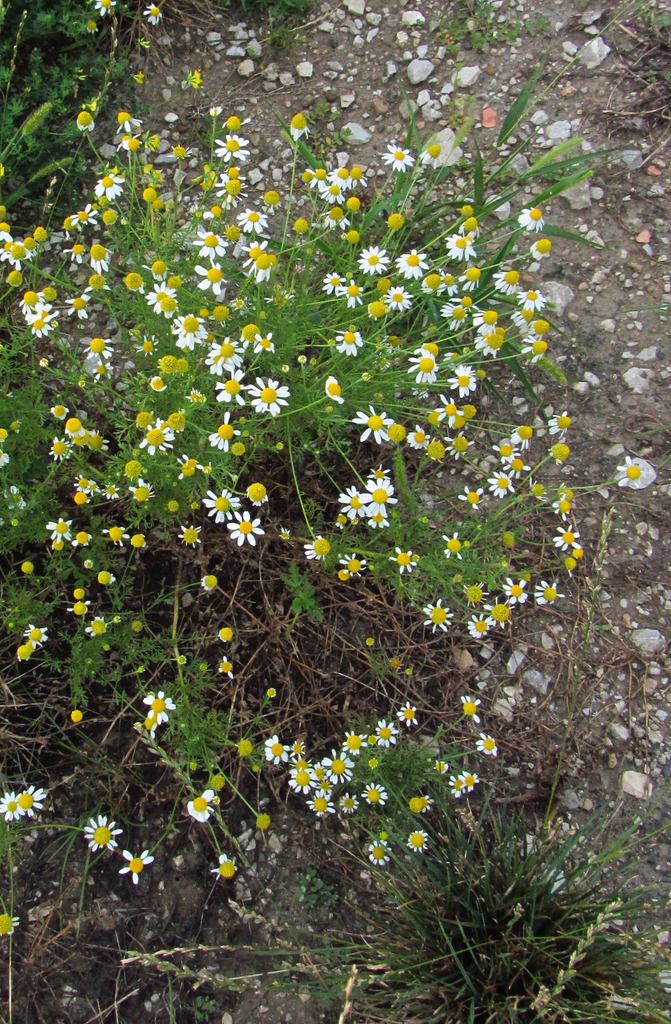More plants in the aster family are now flowering across Iowa. I have trouble identifying asters, especially the ones with white ray flowers and yellow center disks. The website of the Lady Bird Johnson Wildflower Center at the University of Texas took the pressure off by commenting, “The many small-flowered asters found in eastern North America are often difficult to distinguish from one another, as are many of the large-flowered species.” These descriptions of similar-looking white asters give you a sense of how complicated it can be to identify plants in this group, even for experts.
I enclose below pictures of three or four different aster species you may find blooming in Iowa this month. I believe at least two of them are native; one is an invasive plant from Europe. You don’t necessarily need to explore natural habitats to find these wildflowers. Some are opportunistic enough to grow on low-quality soil in vacant lots or along roadsides. I have a soft spot for the weedy aster species, because unlike, say, wild parsnip, they aren’t hurting anyone.
This post is also a mid-week open thread: all topics welcome.
This first plant may be Daisy fleabane (Erigeron strigosus) or (Erigeron annuus). Supposedly the common name “originated from a belief that dried flowers could rid a dwelling of fleas.” Annual fleabane is a closely-related plant.
Daisy fleabane can grow several feet tall. This shot is a little under-exposed but gives you a sense of what a larger plant looks like. The smaller flowers near the lower left-hand corner are white snakeroot, an important plant in U.S. history.
Here’s a closer look at aster flowers (possibly daisy fleabane) with white snakeroot flowers and foliage to the right:
These asters were growing at edge of a yard, near a sidewalk. The plant looked too short and bushy to be daisy fleabane. I didn’t search for a more precise answer in these descriptions of small-flowered white asters.
The prairie patch along the Windsor Heights bike trail has many colonies of this aster. Whatever this plant is, it likes wet ground; the area has flooded several times in recent weeks. The small yellow flowers in this photo are bird’s-foot trefoil, a European native that became widespread in North America because it is an excellent food source for grazing livestock.
I stepped back to get this picture of a large colony of this white aster. The taller plants with small white flowers are Queen Anne’s lace, also a European native commonly found in fields and along roadsides in the U.S.
I found this last aster growing in a vacant lot where a gas station used to be until a few years ago. I had hoped it was an enterprising native plant, but a friend identified it as German chamomile (Matricaria chamomilla).
According to the Illinois Wildflowers website, German chamomile often grows in “disturbed meadows, vacant lots, areas along roads and railroads, and waste areas.” So it fits right in here:

